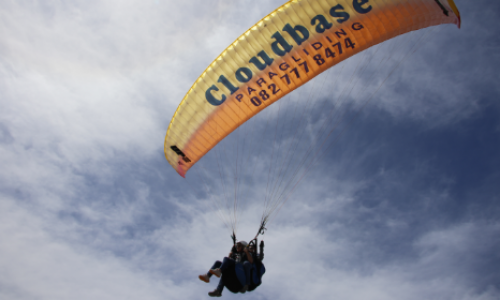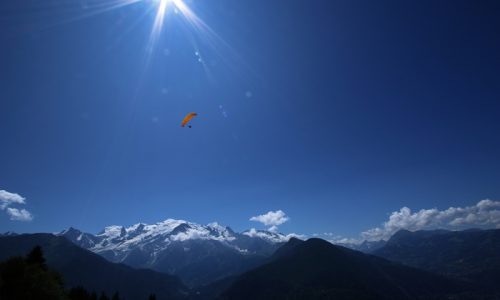By Don Pinnock
(originally posted on Daily Maverick)
That clouds are water vapour, snow or hail is common knowledge. But, for centuries their shapes were a puzzle – until Luke Howard marshalled them to order.
At six o’clock one evening in December 1802, clouds ceased to be the exclusive domain of poets and lovers.
As a young man named Luke Howard untied his bundle of notes in the basement of Plough Court, London and began to speak, the skies were never to appear the same again. It was a startling performance, and when he finished speaking the place was in uproar.
In a way almost unimaginable today, the middle classes of cities in early 19th century Europe and North America had a thirst for new knowledge. In halls, basements and clubs anyone with something new to tell and the confidence to tell it would draw crowds of paying spectators. Plough Court was one such venue.
The speaker that day had been born to a Quaker family in Red Cross Street, London: honest, hardworking people who placed a high value on technical education. Theirs was a household in which luxury and idleness were held to be entirely against God’s wishes. Young Luke’s habit of staring at clouds for hours must have seemed a grievous waste of time to his stern Quaker father. His interest was quickened when, in 1873, a sickly haze from volcanic eruptions as far away as Japan and Iceland cloaked Britain for months and caused wild thunderstorms. Weather was on the front page of every newspaper and on everyone’s lips.
When Luke completed his secondary schooling, Howard snr decided the best remedy for his dreamy son would be to apprentice him to a chemist in London. As Dissenters, Quakers were denied admission to higher institutions of learning. In the basements of London he joined other Dissenting young scientists in endless, intense discussions which would produce some of the finest minds of the century. Retail chemistry would ever after provide Luke his income, but meteorology would be his life.
Clouds write, erase and rewrite themselves with endless fluidity, showing clearly that there is no moment in nature when nothing can be said to be happening. To the poetic imagination they stood as ciphers of a desolate beauty, gathering randomly and dispersing with the wind. By their nature, they are self-ruining and fragmentary. They flee upwards or over the horizon to their forgotten end.
To quote Richard Hamblyn in The Invention of Clouds, “every cloud is a small catastrophe, a vapour that dies as we watch it. When it is gone, without a trace, how could it be registered as anything but a brief sign in the sky?”
Until the moment Howard gave his Plough Court lecture, clouds had – for countless millennia – been the domain of words but not measurement. They were, as Samuel Johnson complained, “always available, always with us and always unclear”. How could they be imagined as part of nature’s continuous scheme? What could there be to a cloud in the sky but vague metaphorical allure?
There had always been those, however, who attempted a more scientific understanding. Three-thousand-year-old Chaldean clay tablets from southern Babylonia observed that “when a cloud grows dark in heaven, wind will blow.” During the Shang dynasty, Chinese scholars kept weather journals, recording wind direction, rainbows, snowfalls and cloud movements. A few centuries later, the Taoists developed a whole pantheon of weather (from which the modern ideas of Feng-Shui – wind and water – are derived). It included the gods of Thunder and Lightning, the Earl of Wind, the Master of Rain and his young apprentice, the Little Boy of Clouds.
By 600BC the Greek Thales – probably Western civilization’s first scientist – was conversant with astronomy, brontology (the study of thunder), ceraunics (the study of lightning) and nephrology (the study of clouds). He discovered the fundamental truth that we do not live on the summit of solid earth but at the bottom of an ocean of air. Some 200 years later his fellow countryman, Aristophanes, was droller about clouds, claiming them to be the patron goddesses of the layabout from which we derive our intelligence and reason.
Aristotle, in around 340BC, viewed them with a far more critical eye. Clouds, he said, depended on the mingling of the stratified elements: the heat of the sun rearranging cold water on the surface of the earth to form a new, warmer substance – similar to air – which rises. This, he said, was the substance from which clouds were formed. They did not gather at the “top” of the sky as the fire of the sun burned them, he reasoned, and were not too close to the Earth because of heat from reflected sunlight. As theories go, it wasn’t bad.
By AD79 the Roman scholar Pliny the Elder attributed the meteorological lifecycle to the attractive power of the stars: “…rain falls, clouds rise, rivers dry up, hailstorms sweep down, rays scorch… then are broken and recoil and carry with them moisture they have drunk up. Steam falls from on high and again returns on high. The stars attract and repel.”
With the coming of the early Christian era these views sank from view, weather being attributed to divine and moral intervention.
There, meteorological matters rested until the Jesuit philosopher René Descartes turned his mind to them in the early 17th century.
Clouds, he argued, most likely consisted of water droplets or small particles of ice formed by compressed vapours given off by objects on the ground. These droplets coalesce, rise up in little heaps and, gathered together, “compose vast Bulks so loose and spongy that they cannot by their weight overcome the Resistance of the Air”. Then, too large to stay aloft, they fall as rain, snow or hail. It was a fair description, but exactly why clouds formed the shapes they did eluded him and those who followed.
One early proposal was that acids in the air corroded water into cloud shapes (the “menstruum” theory), another was that particles of fire became detached from sunbeams and adhered to particles of water, creating lighter-than-air molecules which rose to create clouds.
The most persistent theory against which Howard had to do battle was the “bubble” theory. This held that particles of water, through the action of the sun, formed hollow spherules filled with an “aura” of rarified air which rose like balloons until they burst, the water falling as rain.
When Luke Howard had been speaking for nearly an hour, his audience found itself in a state of mounting excitement. Most people in the room would have understood that clouds were staging posts in the rise and fall of water. Howard had gone way beyond that.
Not only did clouds have fixed properties of their own, he said, but their form and their action could be described in a few types “as distinguishable from each other as a tree from a hill, or the latter from a lake”. They could be understood as families and species.
Clouds, claimed Howard, came in three basic types: cirrus (from the Latin for fibre or hair), cumulus (from the Latin for heap or pile) and stratus (from the Latin for layer or sheet). A fourth form, nimbus (from the Latin for cloud) was a rainy combination of all three types. He described their creation, their action, their transformation and dissolution.
What galvanised the Plough Court audience was the elegant and powerful fittingness of Howard’s descriptions. He had reduced the ever-changing vaporous masses overhead to just four, easily identifiable types. What they had heard seemed so simple and self-evident – as path-breaking ideas often are. Many must have wondered why it had taken so long for someone to understand the form of clouds.
As the lecture ended, the excited audience could see clouds for what they were: the visible signs of the otherwise hidden movements of the atmosphere. Howard had opened up the clouds to view.
He would battle those who initially objected to his descriptions (and one who tried to claim them as his own). His essay On the Modification of Clouds was translated, discussed and its fame spread. Within 10 years Howard was regarded as meteorology’s greatest living exponent, cited wherever the subject was discussed.
His reputation would grow until he became an ever-shy but often-present member of England’s celebrated sons. His descriptions overcame contenders on the Continent and in America, altering, elaborated upon but remaining essentially unmistakable.
Howard’s way of seeing clouds profoundly influenced the work of English landscape artists Constable and Turner and captivated the great German philosopher Goethe, who penned a poem in his honour, part of which reads:
Howard gives us with clearer mind
The gain of lessons new to all mankind;
That which no hand can reach, no hand can clasp,
He first has gain’d, first held with mental grasp.
He became the only Englishman Goethe ever addressed as “Master”.
Luke Howard died in Tottenham at 11 o’clock in the evening of 21 March 1864. There were high, feathery cirrus clouds in the sky.
There the understanding of cloudforms rested, virtually unchanged, until 1960. In that year a Polish mathematician, Benoit Mandelbrot, would tear them to mind-blowing, beautiful infinities.

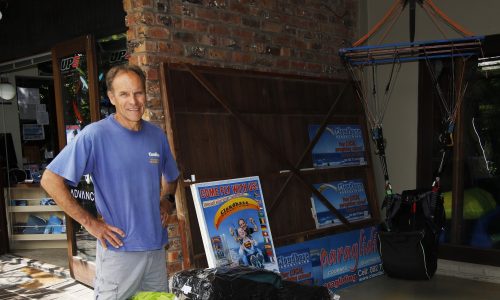
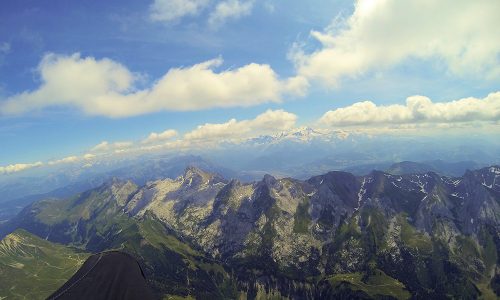

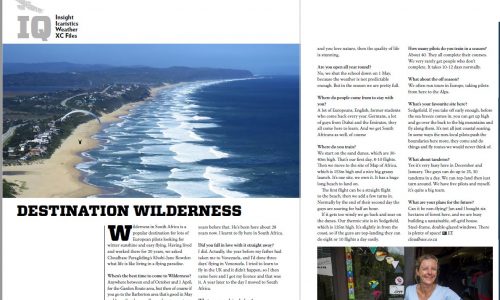
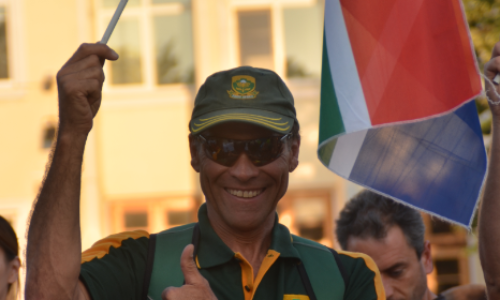
 Khobi-Jane Bowden became an integral part of Cloudbase Paragliding in May 2002.
Khobi-Jane Bowden became an integral part of Cloudbase Paragliding in May 2002.